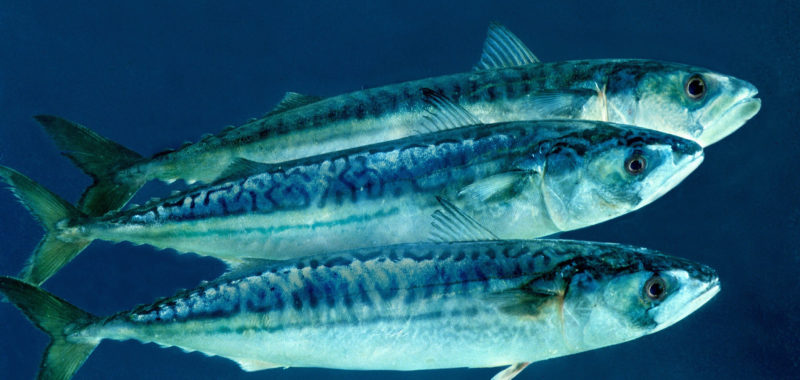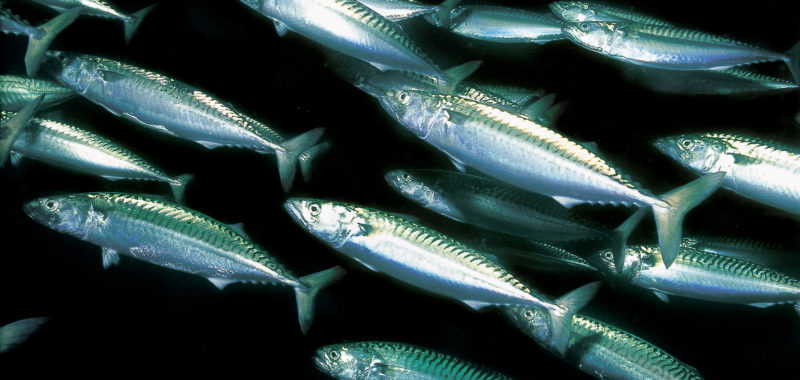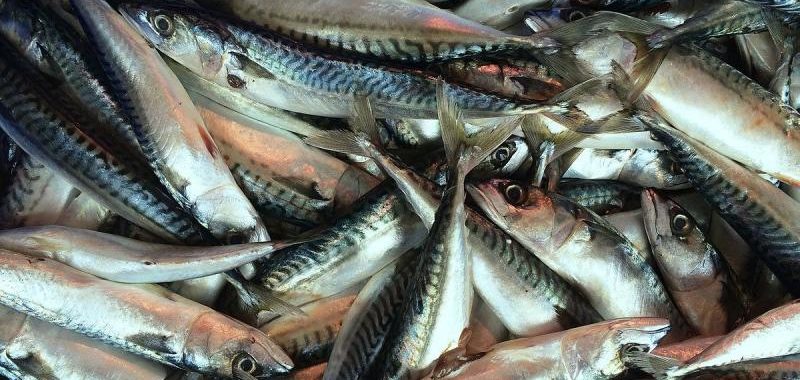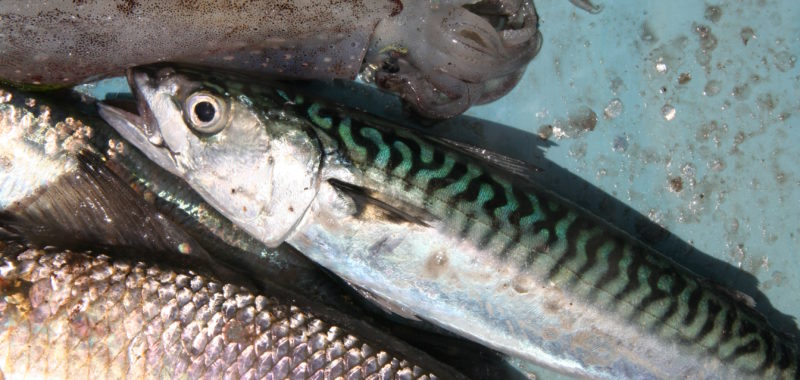Priority Species: Atlantic Mackerel
Scientific name: Scomber scombrus
DFO Stock Status: Critical zone (1/1 stock)
COSEWIC Status: No COSEWIC assessment
Dive deeper into stock-specific status details.
The mackerel population, an important food source for whales, tuna, sharks, and birds, as well as for humans, is currently in the critical zone — the 2019 science assessment showed the population is down 86% from where it was in the 1980s and the number of young fish making it to adulthood is the lowest ever. The new science also showed that 75% of all the fish in the water were hatched in a single year, 2015, making the population very vulnerable. There is no agreed rebuilding target yet for recovery and the stock is still being overfished.
Scientists are calling for a drastic reduction in catches or a fishery closure Mackerel fished commercially is used primarily for bait in the Canadian and US lobster fisheries with some sold fresh. There is also recreational fishing for mackerel and fishing by lobster boats directly for their own bait. Both of these sources of mortality are not fully reported and counted.
Population: Since stock status is the most pressing sustainability issue with this fishery, the focus will be on stopping overfishing by drastically reducing the quota allowed and putting meaningful measures in place that align with a rebuilding plan. SeaChoice member organizations have a seat at both the Atlantic Mackerel Advisory Committee where quota decisions are made and the Atlantic Mackerel Rebuilding Plan Working Group where discussions are ongoing to get a recovery strategy in place. We also advocate for an ecosystem approach in managing forage fisheries, like mackerel and herring that takes into account predator needs and other fishery impacts.
Bycatch: Increase monitoring in the herring fishery, to assess level of mackerel bycatch.
Habitat: N/A
Gear: N/A
Monitoring: Increased monitoring is needed to ensure all fishing-related mortality is accounted for in the recreational and bait fisheries. Monitoring needs to include data collection from the lobster fishery on bait use, which is currently part of the MSC certification conditions Canadian lobster fisheries need to fulfill. SeaChoice organizations are undertaking a survey of the recreational fishery.
Markets: SeaChoice aims to improve our understanding of the domestic use of Atlantic mackerel (including volumes), and investigate the existence and nature of exports. While Canadian mackerel is not MSC certified, bait conditions in MSC certification of Canadian inshore lobster pertain directly to mackerel. We will monitor and ensure bait conditions are appropriately addressed through the MSC process, considering the precarious stock status of Atlantic mackerel.
Common/Market Name
Atlantic Mackerel
Distribution
Atlantic Canada
Harvest Method
Gear types: purse seine, gillnet, jig, trap, handline
Management Agency
Department of Fisheries and Oceans Canada (DFO): National Level Management
Market Distribution
Mainly used domestically as bait (volume unknown). About one quarter is exported (data from Statistic Canada).






